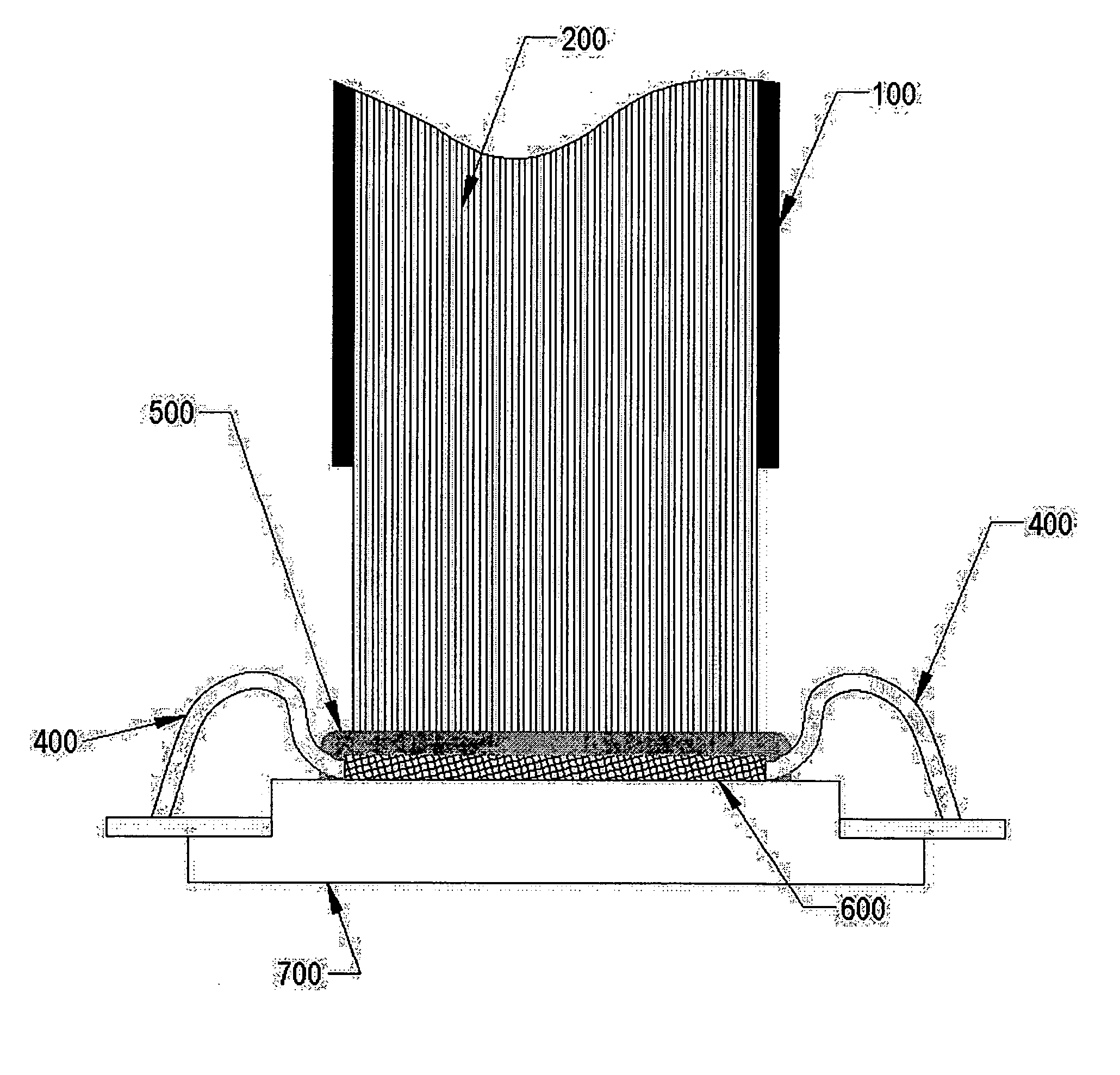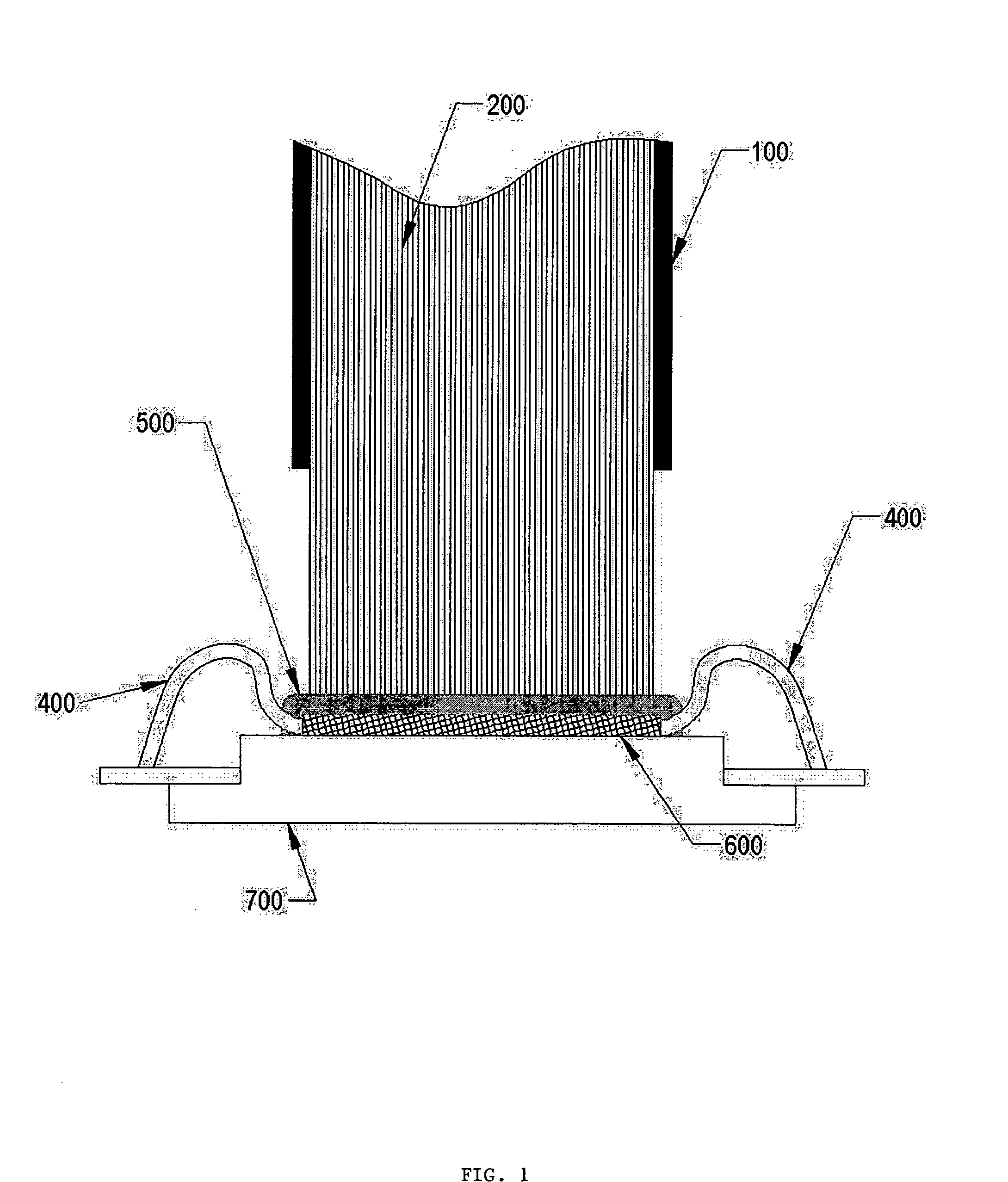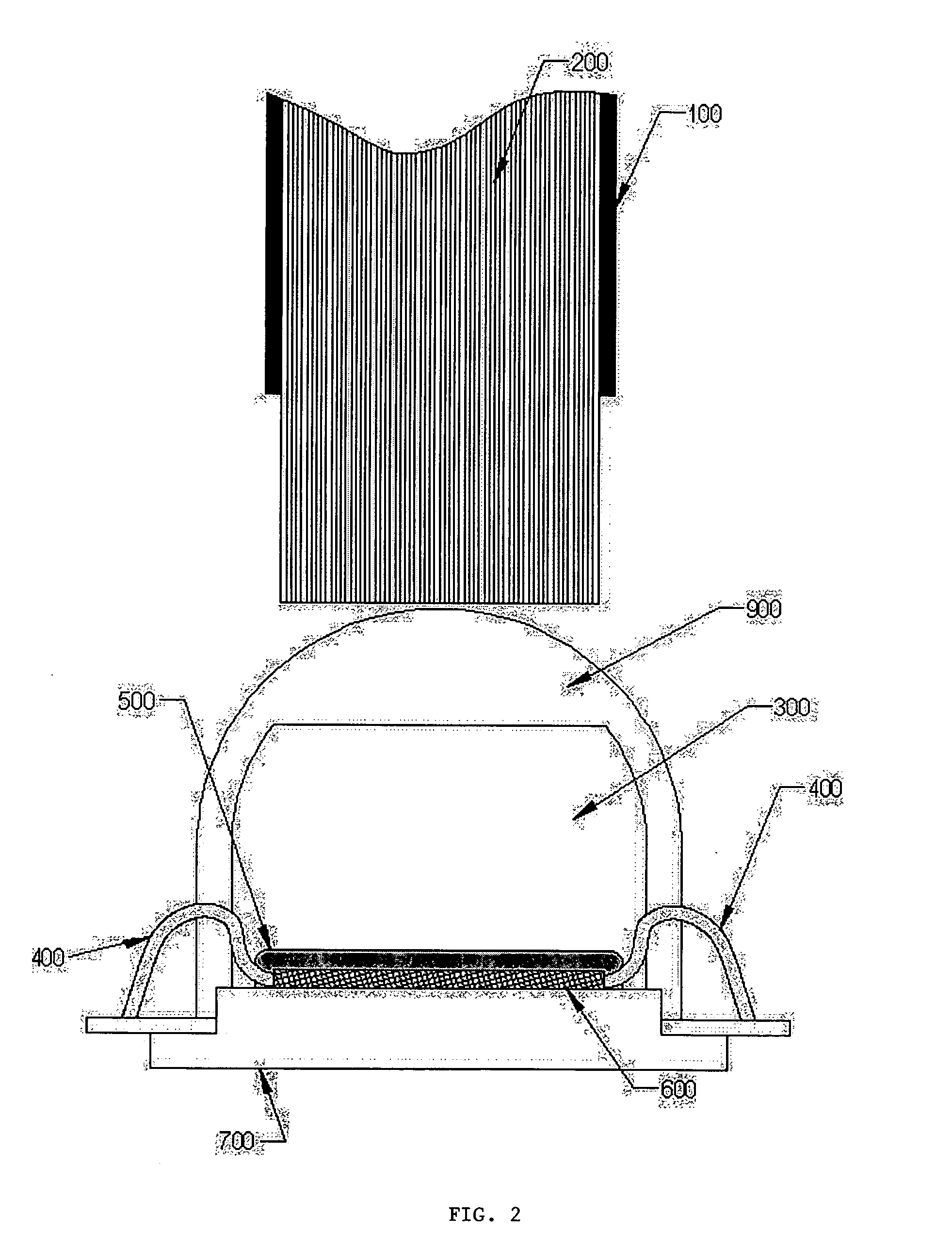Compact, high efficiency, high power solid state light source using a solid state light-emitting device
- Summary
- Abstract
- Description
- Claims
- Application Information
AI Technical Summary
Benefits of technology
Problems solved by technology
Method used
Image
Examples
Embodiment Construction
[0016] The preferred embodiment of this invention utilizes a high power LED (Luxeon III Model LXHL-LW3C, Lumileds Lighting, LLC, 370 W. Trimble Road, San Jose, Calif. 95131) with a typical forward voltage of 3.7V and operating current at 700 mA. This device can be safely operated up to a current of 1A with a corresponding typical forward voltage of 3.9V. This white LED has a typical color temperature of 5500K. The LED chip has an emitting surface of approximately 1 mm×1 mm, and is coated with a wavelength conversion phosphor (and / or fluorophor) that emits a broadband continuum of visible white light between about 470-700 nm.
[0017] The light emitting area of the LED is coupled to a small 1 mm square or round bundle of light guide fibers; a typical light guide bundle size used in endoscopes. The light guide bundle is composed of hundreds of individual glass (or plastic) fibers grouped together to form a single bundle at the light source, and either a single bundle or multiple bundles...
PUM
 Login to View More
Login to View More Abstract
Description
Claims
Application Information
 Login to View More
Login to View More - R&D
- Intellectual Property
- Life Sciences
- Materials
- Tech Scout
- Unparalleled Data Quality
- Higher Quality Content
- 60% Fewer Hallucinations
Browse by: Latest US Patents, China's latest patents, Technical Efficacy Thesaurus, Application Domain, Technology Topic, Popular Technical Reports.
© 2025 PatSnap. All rights reserved.Legal|Privacy policy|Modern Slavery Act Transparency Statement|Sitemap|About US| Contact US: help@patsnap.com



